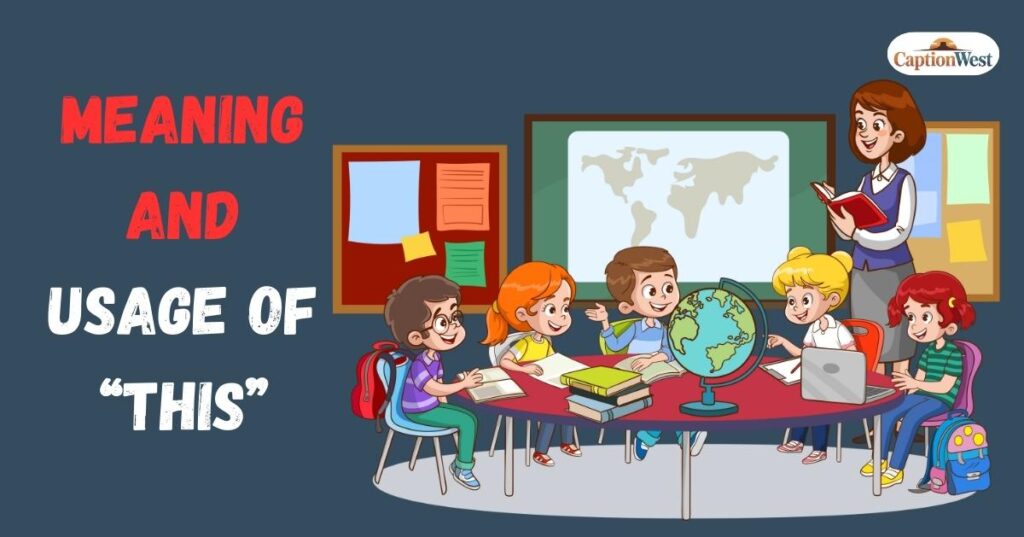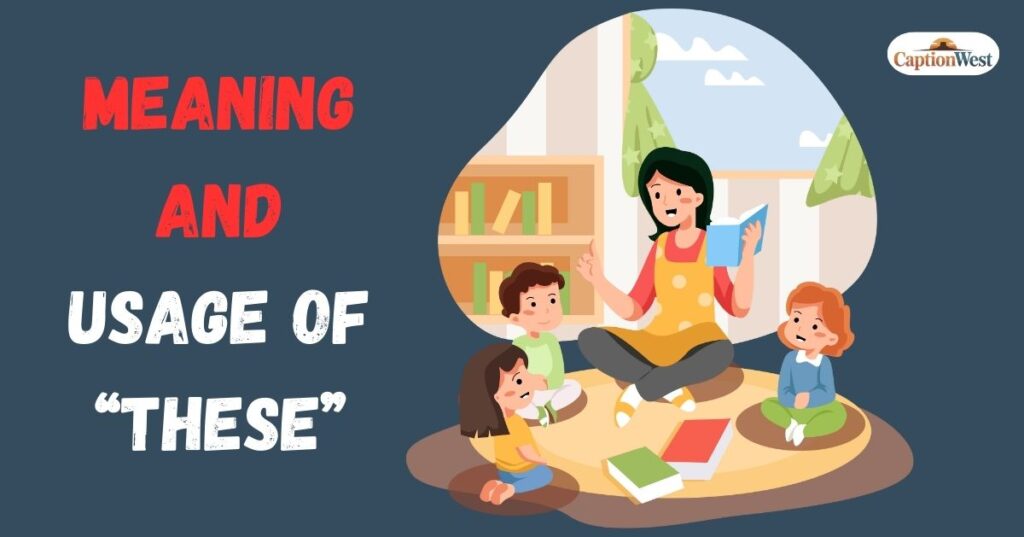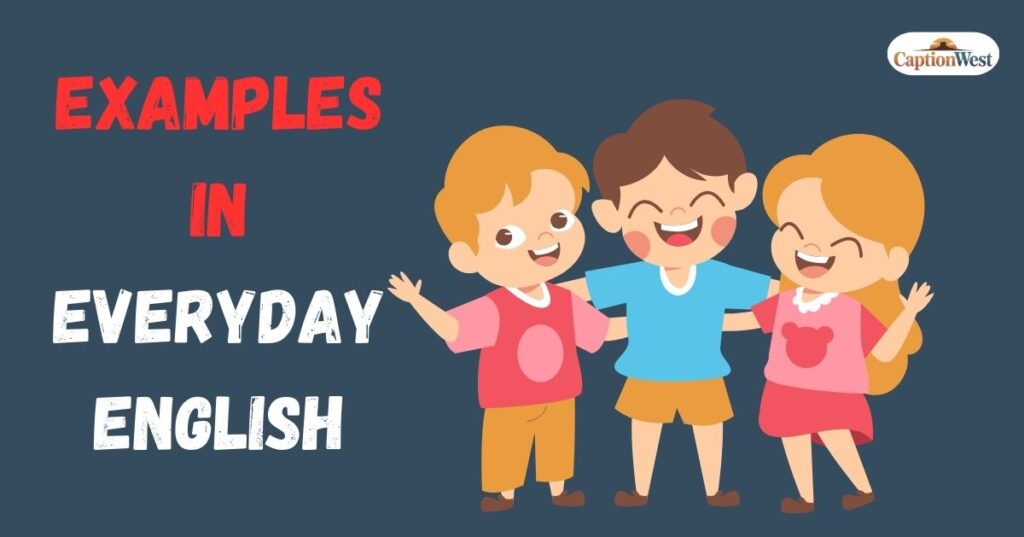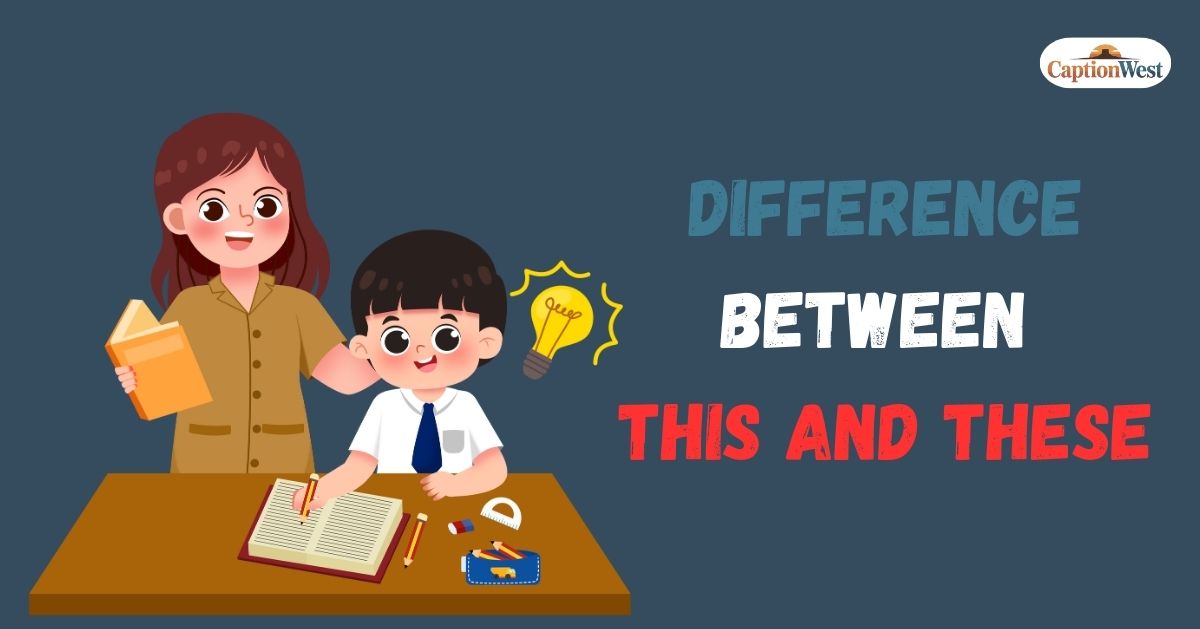If you’re learning English, one of the most common confusions you’ll face is the difference between this and these. Both words belong to a group called demonstratives—words that point to people, objects, or ideas. While the two look similar, they’re not interchangeable.
Here’s the short answer:
- This is used for singular nouns or uncountable nouns.
- These is used for plural nouns.
Understanding when to use this vs these can instantly improve your grammar and make your writing sound natural. In this detailed guide, we’ll explore their meanings, rules, examples, common mistakes, and grammar tips to help you remember the correct usage.
What Are Demonstratives?
Demonstratives are words we use to point out nouns in a sentence. They help us identify whether something is near or far, singular or plural. The four main demonstratives in English are:
- This (singular, near)
- That (singular, far)
- These (plural, near)
- Those (plural, far)
For example:
- This book is on the table. (singular, near)
- Those books are in the bag. (plural, far)
In this article, our focus is on this and these, the two demonstratives used to describe things that are near in space or time.
Meaning and Usage of “This”

1. “This” with Singular Countable Nouns
We use this before a singular noun when referring to one specific item.
Examples:
- This pen is mine.
- Can you move this chair?
- I like this dress.
2. “This” with Uncountable Nouns
Uncountable nouns (like water, sugar, music, happiness) are treated as singular, so we also use this with them.
Examples:
- This water tastes fresh.
- What is this music you’re playing?
- She’s full of this energy today.
3. “This” with Time Expressions
This is often used to describe the present or near time.
Examples:
- My boss called me this morning. (near past)
- What are we having for dinner this evening? (near future)
- I’m traveling a lot this year. (present)
4. “This” as a Pronoun
When the noun is omitted, this acts as a pronoun.
Examples:
- Don’t touch this.
- This is delicious!
- I’ll explain this later.
Meaning and Usage of “These”

1. “These” with Plural Countable Nouns
We use these when pointing to more than one thing.
Examples:
- These apples are sweet.
- Who are these people in the picture?
- I need to buy these shoes.
2. “These” as a Pronoun
Just like “this,” these can also stand alone as a pronoun when the noun is clear from context.
Examples:
- I don’t want any of these.
- Wow, I love these!
- These are the books I mentioned.
Key Difference Between This and These
The main difference between this and these comes down to number:
- This = singular or uncountable
- These = plural
Here’s a quick comparison table:
| Word | Usage | Example |
| This | Singular countable or uncountable | This apple is fresh. / This water tastes strange. |
| These | Plural countable nouns | These apples are fresh. / These shoes are expensive. |
Tip: If the noun is one, use this. If it’s more than one, use these.
Using “This” and “These” as Pronouns
Both words can replace nouns in sentences when the subject or object is already clear.
Examples with This:
- I don’t like this.
- This is my favorite movie.
Examples with These:
- These are heavy—please help me carry them.
- I bought these yesterday.
This usage makes speech and writing more natural and less repetitive.
Common Mistakes Learners Make
English learners often make small mistakes with this vs these. Here are some frequent errors:
- ❌ These necklace is pretty.
- ✅ This necklace is pretty.
- ❌ This cookies are tasty.
- ✅ These cookies are tasty.
- ❌ I can’t believe these music is loud.
- ✅ I can’t believe this music is loud.
Quick rule:
- “This” → 1 item or uncountable thing.
- “These” → 2 or more items (plural countable).
Examples in Everyday English

Examples of “This”:
- This phone is brand new.
- I’ve never seen this painting before.
- Are you free this afternoon?
Examples of “These”:
- These keys belong to you.
- I can’t carry all these bags alone.
- These kids are very noisy today.
Literature and Real-Life Examples
Writers and speakers use this and these in creative ways too. Here are some examples from books:
- “This morning I had poison for breakfast.” — Lemony Snicket
- “The kids stared at me, awestruck. Why had their parents not explained this to them?” — Andy Weir
- “Some of these women have had so much work done their words come out all mushy.” — Maggie Shipstead
- “But these days, inside my closet, poetry is as real to me as an ax. I need it more than food.” — Amity Gaige
These examples show how naturally these words fit into everyday writing and storytelling.
Quick Recap: Difference Between This and These
Let’s summarize the difference between this and these in simple points:
- This = singular or uncountable noun (this pen, this music, this year).
- These = plural countable noun (these pens, these people, these days).
- Both can be used as pronouns when the noun is omitted.
- This usually refers to something near or happening now, while these refers to multiple nearby things.
Read Must : Difference Between Who and Whom: A Complete Grammar Guide
Conclusion
The difference between this and these may look small, but it’s an essential part of English grammar. Mastering these words will make your writing and speaking more accurate.
Remember:
- Use this when referring to a single noun or uncountable noun.
- Use these when referring to plural nouns.
By practicing with examples and paying attention to singular vs plural, you’ll never confuse the two again. Next time you’re writing, just ask yourself: Am I talking about one thing or many things? That simple question will guide you to the right demonstrative.

